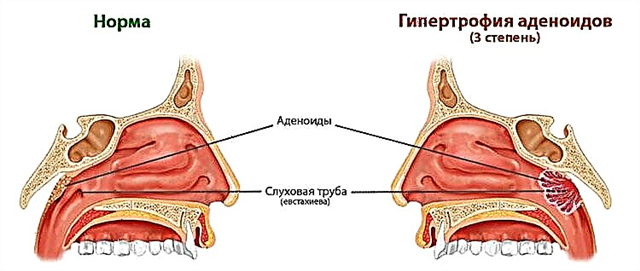The deviation of the shape of the nose from the standards accepted in society or characteristic of a given nationality can lead not only to depression, nervousness, isolation, but also interfere with communication, be an obstacle in choosing a profession and career advancement.
In addition, some features of its structure and shape may be due to anatomical disorders and be accompanied by the development of pathological processes. The only way to solve this problem is to perform a surgical intervention. A plastic surgery performed to reshape or resize the nose is called rhinoplasty.
Difficulties in nose tip correction
 A pathological change in the shape of the nose can be in the form
A pathological change in the shape of the nose can be in the form
- its curvature in any department;
- true increase or decrease;
- the presence of a pronounced hump or notch on the back;
- enlarged or curved tip of the nose.
Depending on the desired result and technical capabilities, the surgical intervention can be aimed at modeling the bone and cartilaginous parts, or be combined. The choice of the necessary equipment, instruments, and the procedure for carrying out the operation is carried out by a plastic surgeon with the obligatory interaction with the patient.
Correction of the tip of the nose is the most difficult part of rhinoplasty. This is due to the fact that the framework of this section of the nose is two free cartilages that are not connected to the bony part of the septum. Cartilage tissue has the property of a sharp change in its shape when exposed to it in any way, thermal or mechanical. Thus, even a technically flawless operation does not always lead to the desired result.
After excision of certain areas of the cartilage, the remainder of the tissue can twist, reshaping the modeled tip. At the same time, removal of both cartilage that forms the support of the tip can lead to loss of shape and an even less aesthetic appearance. All this creates difficulties when choosing a method of surgical intervention, forcing the use of replacement methods, the use of implants.
Surgical tactics
 The indications for surgery on the tip of the nose are its changes:
The indications for surgery on the tip of the nose are its changes:
- duality;
- upturned;
- side shift of the axis;
- wide tip, the so-called "potato nose";
- hookedness of it.
The surgical intervention is preceded by a comprehensive examination of the patient, including all the necessary hardware and endoscopic examinations of the nose and paranasal sinuses.
In addition, the results of laboratory diagnostics should be obtained and interpreted, allowing to assess the general state of health of the patient, the presence of comorbidities.
You can change the tip of the nose using an open approach or endonasal, when no skin incisions are made. In this case, the application of external sutures is not required, and the recovery period is faster. The disadvantage of this method is the less accessible visual observation of the surgical site. This makes it harder to achieve the desired effect. In addition, this approach increases vascular damage. This leads to the development of hematomas, which also affects the lengthening of the recovery period.
With the open method, skin incisions are made in the necessary places. The excess cartilage is then removed and sutures are applied to shape the nose.
Healing with an open access takes longer; a whitish strip may remain at the site of the incision and suture.
However, with such a management of the operation, the surgeon opens up wider possibilities of a technical nature.
Correction of the tip of the nose can also mean carrying out a reconstructive operation, when, as a result of some processes, the destruction of this organ occurs. Most often, injuries are the cause of such a pathological process. However, destruction can be associated with diseases such as systemic lupus erythematosus, syphilitic lesions. In this case, a transplant of a portion of the auricle is used.
The tip of the nose can be reduced by tying the parted cartilage together. As a result of such a surgical intervention, a narrowing of this department occurs. To create an aesthetically pleasing nasal tip, additional reinforcing materials, cartilage from the ear or excess cartilage from the nasal septum can be used.

Hook nose surgery is similar to surgery for correcting a truly long nose. In this case, a certain section of the cartilage of the nasal septum is removed, the remaining parts are connected and sutured. After such an operation, the length along the back decreases, which leads to a smoothing of the shape.
Contraindications
Rhinoplasty for this change in the shape of the nose is usually performed under general anesthesia.
The duration of the operation is about an hour. A contraindication to its conduct is the presence of diseases such as
- cardiovascular pathology in the stage of decompensation;
- concomitant severe kidney and liver diseases in the acute stage;
- diabetes;
- oncopathology;
- disorders of the coagulation system;
- diseases characterized by a decrease in immunity;
- acute respiratory diseases;
- pustular skin lesions in the area of the operation;
- the presence of menstruation in women.
Recovery period
 The recovery period after surgery can last anywhere from one to four weeks.
The recovery period after surgery can last anywhere from one to four weeks.
For a certain time, edema of the paraorbital region and nose may persist. The final results of the operation can be judged after a few months. If necessary, repeated surgery can be performed no earlier than 6-8 months.
In some cases, rhinoplasty and nasal tip reduction can be accompanied by the development of side effects, such as:
- bleeding;
- the formation of edema on the face;
- cicatricial changes in the skin.
If the operation is carried out correctly, all these signs are temporary. Over time, they regress, which is facilitated by appropriate postoperative care and the implementation of the surgeon's recommendations.
Non-surgical rhinoplasty
In cases where there is a need for nose correction, but such a radical solution is difficult, or there are contraindications to its implementation, an alternative approach can be applied, which implies improving the shape of the nose without using surgical techniques.
In some cases, the tip of the nose can be corrected by using non-surgical rhinoplasty. This method involves injecting various fillers under the skin to fill the required space, thereby straightening the nose. Substances injected under the skin can be different in their structure, which determines the duration of their exposure.
The fillers used can be created on the basis of hyaluronic acid, collagen, synthetic materials. Depending on the substance used, they last from 8-12 months to several years, then break down into simpler structures and are excreted from the body. In this regard, in the future, it is recommended to repeat the procedure. It is precisely in the need for repeated actions that the main disadvantage of the technique using these compounds lies. At the same time, materials based on biopolymer gels and silicone are not excreted from the body, but have the property of rejection and migration in the body.

The indication for non-surgical rhinoplasty is
- curvature of the entire nose or its tip;
- irregularities caused by the curvature of the nasal septum or resulting from trauma and previous operations;
- congenital defects of the tip of the nose;
- sagging and sagging skin.
Answering the question of how to reduce the tip of the nose or change its shape, the plastic surgeon must weigh all the factors, carefully listen to the wishes of the patient, and discuss doubtful points with him. An important part of the work is preliminary computer modeling of the results of the operation. All doubts present in the patient must be dispelled even at the stage of consultation. In cases where the patient doubts the need for radical action, one should turn to non-surgical techniques.



